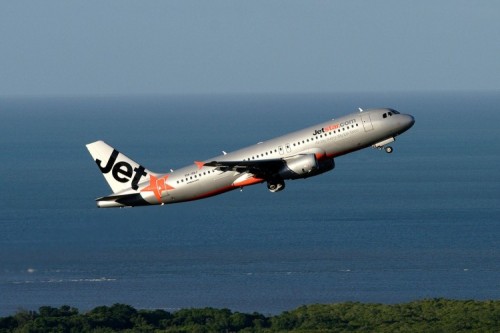Jetstar pilots forgot to lower the landing gear
10 December, 2019
4 min read
By joining our newsletter, you agree to our Privacy Policy


The pilots of a Jetstar A320 forgot to lower the landing gear as they approached Ballina airport in northern New South Wales and were forced to conduct a go-around after they were alerted to the oversight by a master warning.
The aircraft operating a flight from Sydney in May, 2018, had already conducted one go-around after the captain decided its airspeed and altitude were higher than a normal approach profile.
LISTEN: New podcasts tell very diffrent story about Lion Air MAX crash
The Australian Transport Safety Bureau found the flight crew did not follow the Jetstar standard procedures during the first go-around and this created distractions that contributed to the landing gear oversight.
In particular, the flaps remained at the Flaps 3 position during the visual circuit rather than the company standard of Flaps 1.
The first go-around was performed correctly by the first officer until the Jetstar A320 reached the circuit altitude of 1500ft.
Watch the ATSB video reconstruction of the incident:
[video width="1280" height="720" mp4="https://cdn.airlineratings.com/uploads/ATSBweb.mp4"][/video]
As the first officer leveled the aircraft, it accelerated quickly towards the Flaps 3 limit speed and the FO called for approach mode to be activated to reduce the plane's target speed.
Worried about a potential flaps overspeed, where the airspeed exceeds safe limits for the flap setting, the FO retarded the thrust levers to idle and by doing so de-activated the auto-thrust system and its protections.
IF you love flying you will love this video
“With Flaps 3 still set and 10-degree nose-up pitch altitude, the aircraft performance deteriorated, requiring intervention by the captain,’’ the ATSB said.
Other distractions affecting the crew included the fact the first officer was expecting a left circuit instead of a non-standard right circuit and had not been briefed about the change.
Adding to this was the handover of flight duties to the captain, the need to correct the flight path and the fact the captain continued to fly the aircraft manually, adding to his workload.
The captain elected to remain at Flaps 3, which investigators described as permissible and safe but not Jetstar’s standard configuration for a visual circuit.
“The operator’s sequence of configuring the aircraft for landing required the landing gear to be selected DOWN prior to the selection of Flaps 3,’’ The ATSB report said.
“As the captain turned on to the final approach during the second approach, he scanned the flight instruments, observed Flaps 3 already set and instinctively commanded Flaps FULL, which was the normal sequence from Flaps 3.
“The FO selected Flaps FULL but then also turned his attention to monitoring the aircraft’s flight path.
“As such, neither of the flight crew were aware that the landing gear had not been selected DOWN.”
Investigators said that because the pilots flew the second circuit at 1500ft, the Electronic Centralised Aircraft Monitor (ECAM) had not reset on the second approach and it did not display a landing memo at 950ft.
“The absence of the landing memo should have prompted the flight crew to perform the items of the landing checklist as a ‘read-and-do’ checklist,’’ it said.
“Had they read the required actions from the checklist, both the captain and FO would have been required to independently check and announce that the landing gear was down.
“This method should have effectively ‘trapped’ their error.”
When the landing memo did appear at 800ft, the crew were focused on intercepting the final approach path and performing radio calls and neither recalled seeing it.
“Both the captain and FO were subsequently alerted to the incorrect configuration for landing by a master warning message triggered at about 700 ft,’’ the report said.
The flight crew conducted a second go-around and landed without incident.
ATSB transport safety director Dr Start Godley said the incident highlighted the importance of adhering to standard operating procedures and correctly monitoring the aircraft’s approach.
“In this case a number of factors, such as distraction and limited use of aircraft automation, combined to result in the landing gear not being selected to down,” Dr Godley said.
“While highly undesirable, it should be noted that the aircraft’s warning system effectively alerted the flight crew to the problem and the crew responded promptly to the warning and initiated a second go-around.”
Jetstar said that as a result of the incident, the pilots attended debriefings with operations management and underwent specific simulator and line flying training related to the event.
Next Article
2 min read
Qantas triples profit but misses mark

Get the latest news and updates straight to your inbox
No spam, no hassle, no fuss, just airline news direct to you.
By joining our newsletter, you agree to our Privacy Policy
Find us on social media
Comments
No comments yet, be the first to write one.
